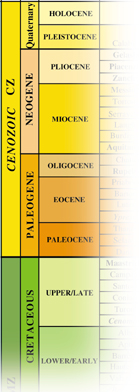
Geotimes Home | AGI Home | Information Services | Geoscience Education | Public Policy | Programs | Publications | Careers

 It’s gone.
A glance at the geologic time scale on the International Commission
on Stratigraphy (ICS) Web site proves it: The Tertiary is no longer there.
It’s gone.
A glance at the geologic time scale on the International Commission
on Stratigraphy (ICS) Web site proves it: The Tertiary is no longer there. |
Geotimes Home | AGI Home | Information Services | Geoscience Education | Public Policy | Programs | Publications | Careers |